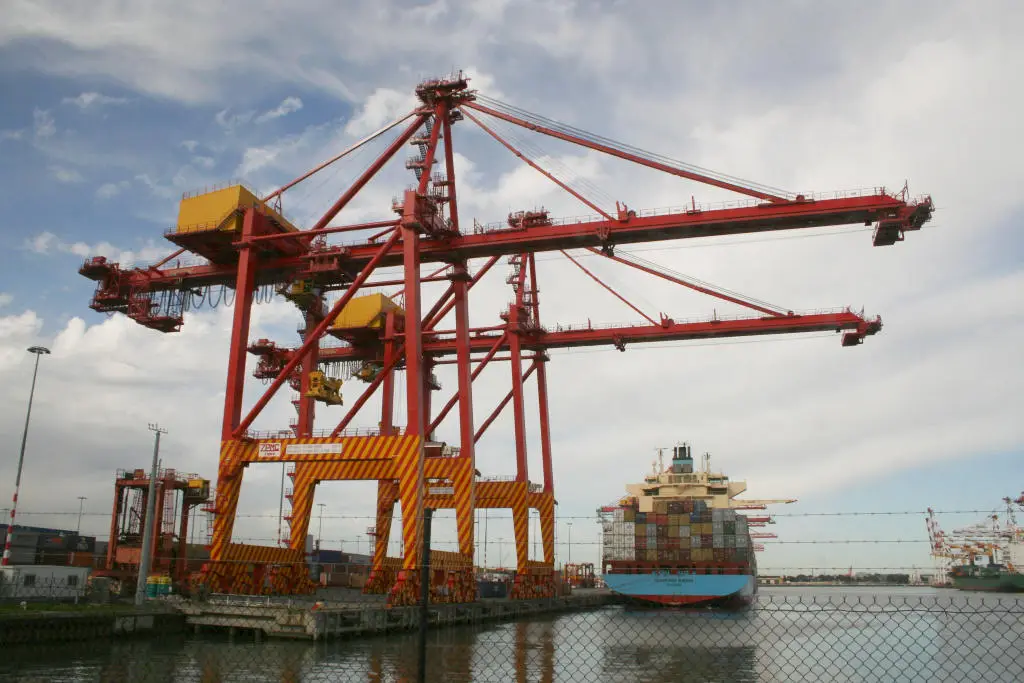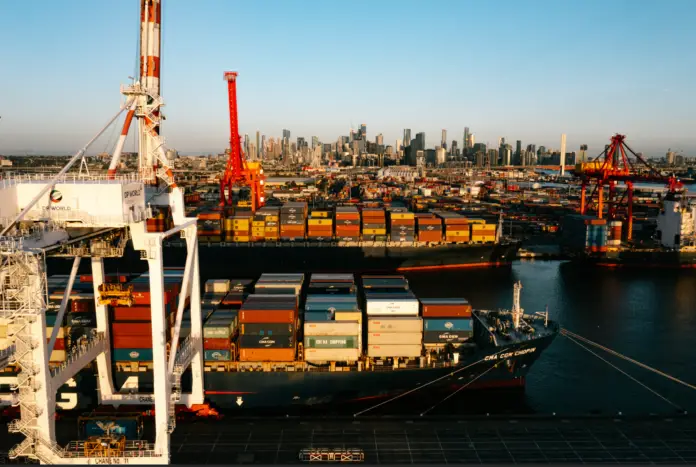September 24, 2024
Port of Melbourne Sees Decline in Container Throughput in August 2024
The Port of Melbourne has experienced a notable decline in container throughput for August 2024, with a 6% drop compared to the same month in 2023. The total volume handled was approximately 252,000 TEUs, marking a significant reduction. Key contributors to this downturn include a decrease in import volumes, particularly for domestic goods like appliances, toys, and furniture, which were down 9.6% from the previous year.
Export volumes also saw a sharp decline, with agricultural products such as wheat, hay, and cotton experiencing a 13% drop. While container movement overall has decreased, there were slight gains in empty container movements (up 1.9%), and a boost in non-container trade like dry bulk, which rose by 17.6%.
The motor vehicle and liquid bulk trades were not spared, showing respective declines of 2.3% and 20%. These figures suggest challenges for the port’s overall trade landscape and reflect broader economic trends impacting global and domestic shipping markets(
The DCN)(


The Port of Melbourne and Other Australian Ports: A Comparative Snapshot
Port of Melbourne: Australia’s Largest Container Port
The Port of Melbourne is not only Australia’s largest container port but also one of the most vital components of the nation’s supply chain, handling approximately 37% of the country’s container trade. With a throughput of over 3 million TEUs (Twenty-foot Equivalent Units) annually, it serves as a critical gateway for imports and exports, particularly agricultural goods, manufactured products, and motor vehicles(
The port’s strategic location on the southeastern coast of Australia gives it direct access to key international markets, including Asia, North America, and Europe. However, recent challenges—such as a 6% decline in throughput during August 2024—highlight its vulnerability to broader economic fluctuations. Factors such as shifts in consumer demand, global supply chain disruptions, and a drop in exports, especially in agricultural goods like wheat and cotton, have impacted its performance(
The DCN).
Despite these setbacks, the Port of Melbourne continues to invest in infrastructure, aiming to accommodate larger ships and future-proof its operations. Projects like the Port Rail Transformation aim to boost capacity and reduce congestion by integrating rail freight, a critical step toward enhancing efficiency in the years ahead(
Other Major Australian Ports
Australia’s coastline is dotted with several key ports, each serving unique roles in the nation’s trade network. Here’s a look at some of the other significant ports:
1. Port of Sydney (Port Botany)
Located in the country’s largest city, Sydney, Port Botany is a critical link in New South Wales’ supply chain. It primarily handles containerised goods and is one of the busiest ports in Australia, with around 2.5 million TEUs per year. Like the Port of Melbourne, Port Botany faces challenges around congestion and capacity, though it has plans in place to expand its infrastructure to meet growing demand(
2. Port of Brisbane
The Port of Brisbane, located in Queensland, is the third-largest container port in Australia. It specialises in both containerised and bulk cargo, making it a key hub for agricultural exports, including beef, cotton, and grain. The port has invested in automation and infrastructure improvements to enhance its efficiency, positioning it as a vital player in both domestic and international trade(
3. Port of Fremantle
Serving Western Australia, the Port of Fremantle is essential for exporting minerals, particularly iron ore and other bulk commodities. It handles significantly lower container volumes than the eastern ports but plays a pivotal role in Australia’s resource-heavy economy. Due to its focus on mining exports, Fremantle has not been as severely affected by recent global supply chain disruptions(
4. Port of Adelaide
The Port of Adelaide in South Australia handles a wide range of cargo types, from agricultural products to manufactured goods. Its role in facilitating trade between Australia and Asian markets has grown in recent years. The port’s proximity to some of the country’s major wine-producing regions also makes it a key player in the export of Australian wines(
The DCN).
Comparative Performance and Challenges
While the Port of Melbourne remains the largest, other ports such as Brisbane and Fremantle have carved out their niche by specialising in specific types of cargo. However, all ports face common challenges, such as ageing infrastructure, capacity constraints, and environmental concerns, including the push towards decarbonisation(
Port of Melbourne). With global supply chain disruptions still affecting trade, Australian ports have been forced to adapt by upgrading technology, streamlining processes, and increasing their focus on sustainability initiatives.
In conclusion, the Port of Melbourne continues to be the cornerstone of Australian trade, but other major ports play equally important roles in the nation’s diverse economy. As ports across the country seek to modernise and adapt to evolving trade patterns, they will need to balance efficiency with sustainability to remain competitive in the global marketplace.









